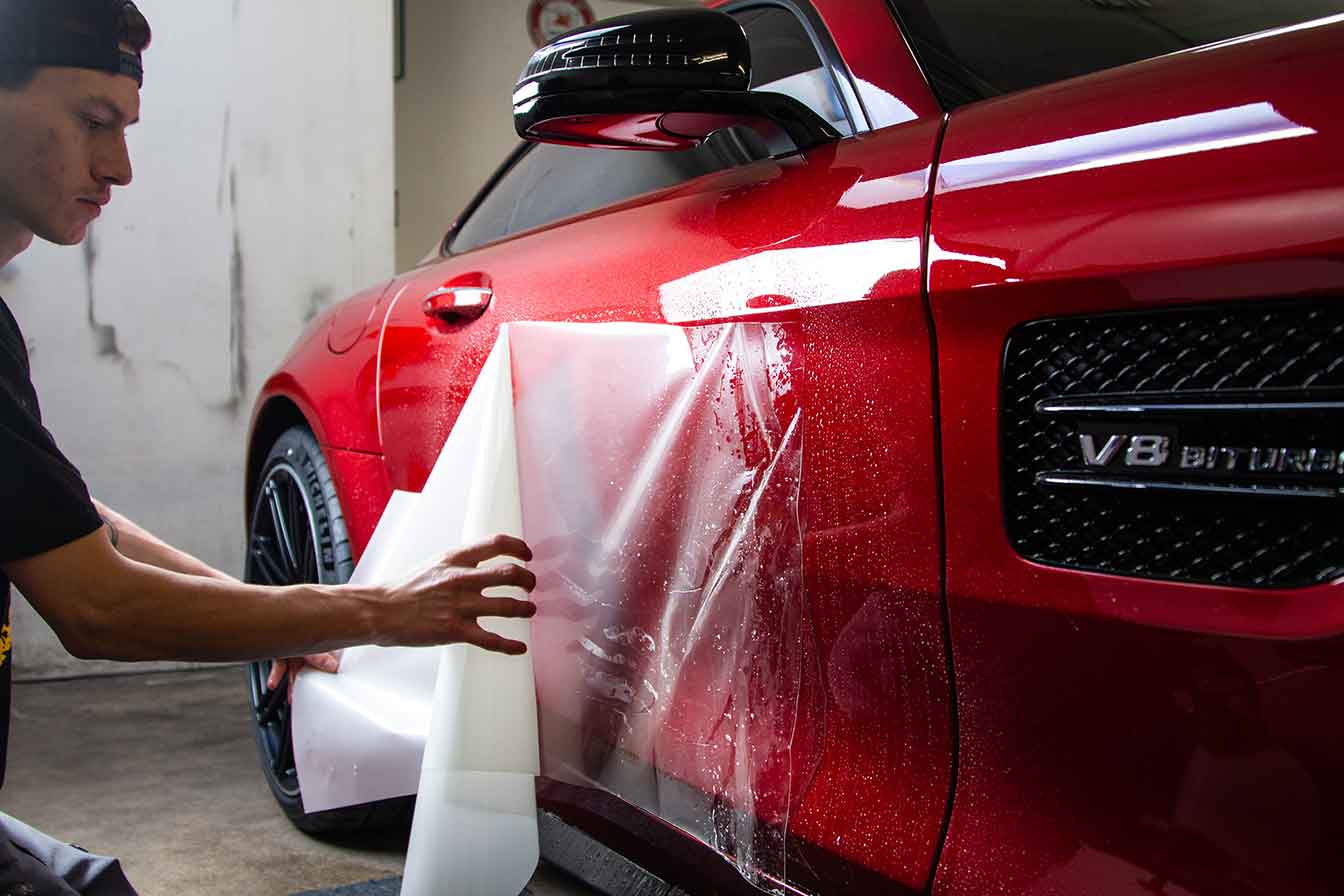Why Ceramic Finishing Is the Ultimate Option for a Flawless Complete
Ceramic covering has emerged as a leading service for those looking for a remarkable finish for their cars, many thanks to its impressive resilience and protective attributes. What variables absolutely established ceramic covering apart?
What Is Ceramic Layer?

When used properly, ceramic finish creates a hydrophobic surface area that fends off water and dust, making it simpler to preserve and clean. Unlike conventional waxes or sealers, which generally use short-lived protection, ceramic coatings can last for several years, depending upon the product high quality and application approach. The process of applying ceramic layer requires precise prep work, consisting of comprehensive cleaning and often repaint improvement, to make sure optimal bonding and efficiency.
Ceramic finishes are not limited to automobile surfaces; they can additionally be used on different products, including glass, metal, and plastics, offering a versatile option for boosting defense. Overall, ceramic covering represents a substantial development in surface protection technology, integrating both aesthetic and useful benefits for a vast array of applications.
Benefits of Ceramic Covering
While several surface area defense options exist, the advantages of ceramic covering stick out due to its one-of-a-kind properties and lasting performance. One of the primary advantages is its outstanding longevity. Ceramic Coating Philadelphia. Unlike standard wax or sealants that require regular reapplication, ceramic finishings offer a durable layer that can last for a number of years, substantially decreasing maintenance initiatives
Another noteworthy advantage is improved protection against ecological impurities. Ceramic finishings develop a hydrophobic surface that drives away water, dust, and numerous contaminants, making it simpler to cleanse. This feature not only maintains the automobile's appearance but additionally minimizes the risk of rust and oxidation, specifically in rough climate condition.
Additionally, ceramic coatings supply superior resistance to UV rays, stopping fading and degradation of paint over time. This UV defense is critical for preserving the visual value of cars and surfaces exposed to direct sunlight.
In addition, the shiny finish accomplished with ceramic finish improves the total visual charm, giving surface areas a showroom-quality shine. On the whole, ceramic coatings stand for a considerable advancement in surface area protection innovation, giving enduring advantages that deal with both functional and visual needs.
Just How It Works
Recognizing the scientific research behind ceramic finishes exposes how they give such impressive defense and long life. At its core, a ceramic finishing is a liquid polymer that chemically bonds with the car's manufacturing facility paint.
The application process involves several actions, consisting of surface preparation, which is vital to attaining optimum adhesion. As soon as applied, the layer undertakes a curing procedure, throughout which it sets and forms a semi-permanent bond with the paint surface area. This bond is what identifies ceramic layers from conventional waxes and sealants, more helpful hints offering a longer-lasting protective obstacle that can endure for several years.
Furthermore, the density of the finish can improve its safety qualities, making sure that it can endure harsh problems. Eventually, the scientific research of ceramic layers incorporates sophisticated products with cutting-edge application methods to deliver an unmatched level of defense and visual enhancement for lorries.
Comparison With Conventional Methods
When contrasted to typical paint security techniques such as sealers and waxes,The advantages of ceramic finishings come to be specifically noticeable. While waxes use a short-lived luster, typically lasting a few weeks to a couple of months, ceramic finishings provide a lasting safety layer that can endure for numerous years. This resilience dramatically decreases the frequency of reapplication, making ceramic finishes a more cost-efficient service over time.
Furthermore, typical techniques often require extensive preparation and multiple applications to attain a sufficient level of security. On the other hand, ceramic finishings bond at a molecular level with the lorry's surface, developing a durable guard against environmental pollutants like UV rays, acid rainfall, and road salts. This bond enhances the vehicle's resistance to scratches and swirl marks, which prevail with traditional waxes and sealers.
In addition, the hydrophobic residential or commercial properties of ceramic coverings fend off water and dirt, resulting internet in simpler cleansing and maintenance. On the other hand, wax and sealant-treated surface areas can bring in crud, demanding more regular washing - Ceramic Coating Philadelphia. Overall, ceramic layers not just give premium defense but additionally supply an extra long-lasting and visually enticing coating, establishing them as the recommended choice for critical vehicle owners
Application and Upkeep Tips

Making use of a foam applicator, apply the layer in small areas, complying with the supplier's guidelines concerning density and overlap. Permit sufficient healing time between coats, normally 24 hr, to ensure appropriate bonding. After application, it is crucial to stay this link clear of exposure to water or severe elements for a minimum of a week to permit the finishing to fully cure.
For maintenance, wash the car consistently with pH-balanced soaps and avoid abrasive products. Touchless auto cleans are recommended to minimize damaging. In addition, utilizing a ceramic maintenance spray can enhance the coating's hydrophobic buildings and long life. Normal assessments for any indications of wear will help keep the covering's stability and protect that immaculate coating.
Final Thought
Finally, ceramic finishing becomes a remarkable choice for achieving a flawless automobile coating. Its phenomenal resilience, protective high qualities, and hydrophobic residential properties dramatically boost the car's appearance while streamlining maintenance efforts. By creating a durable bond with factory paint, ceramic finishing effectively guards versus scrapes, UV rays, and environmental contaminants. With a lifespan extending numerous years, this innovative solution not just preserves but also elevates the total visual charm of cars, making it a cost-effective financial investment for cars and truck enthusiasts.
